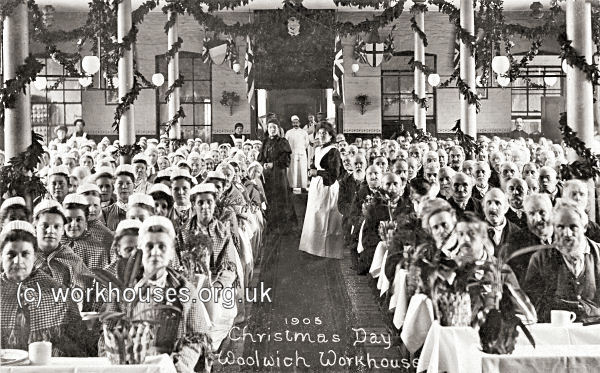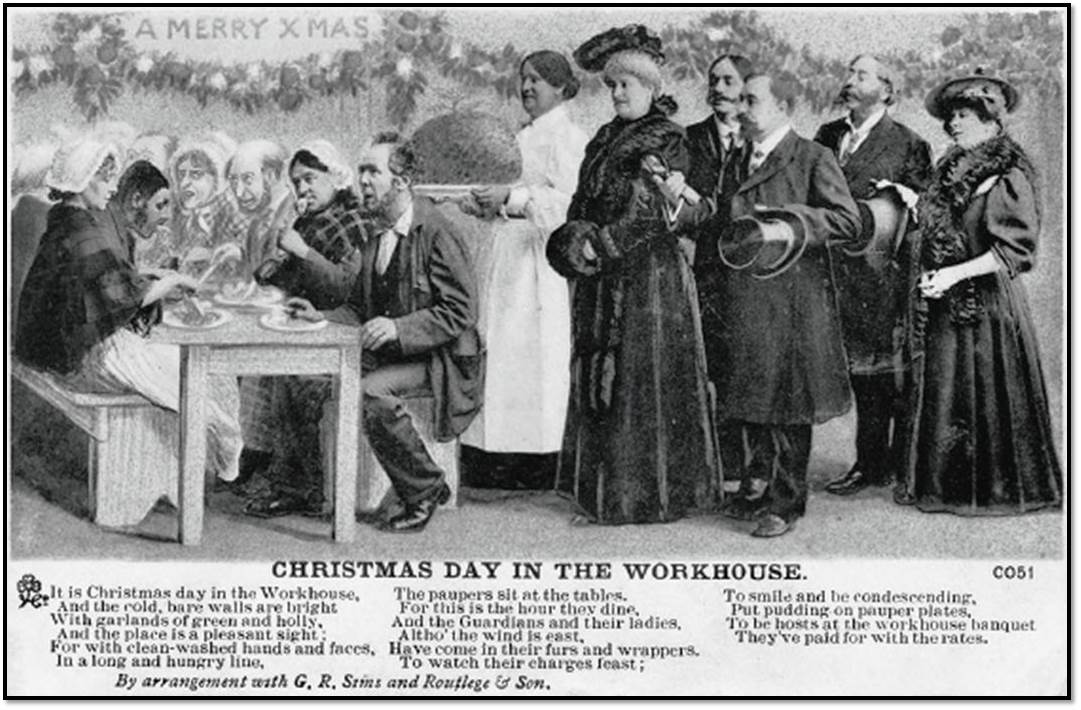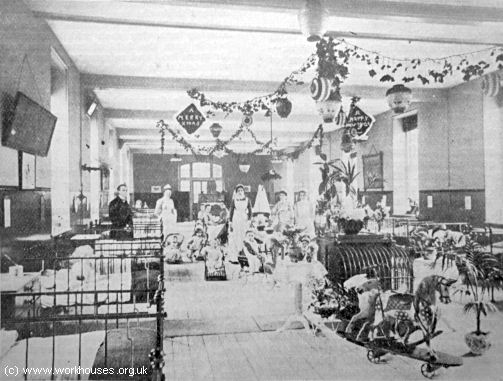- Home
- Local History
- Christmas in the Workhouse
Christmas in the Workhouse
Written by Pam Preedy.
‘Please Sir, I want some more.’
Who amongst us doesn’t recognise these words when Oliver Twist, an orphan, drew the short straw to ask for more food? Although this story by Charles Dickens was not set at Christmas, it illustrates one of the horrors of the workhouse – hunger.
Poverty had always been a problem. It was generally believed that poverty was the fault of the poor because they were lazy and feckless. With the dissolution of the monasteries under Henry VIII, the main source of welfare and charity disappeared. Following a series of poor harvests leading to famine conditions the 1601 Poor Law Act was introduced, giving the parish responsibility to make provision for the poor – mainly the elderly, widows with children and orphans.

New Poor Law introduced
A new Poor Law was enacted in 1834. It was welcomed by some who believed that it would reduce the cost of caring for the poor, take beggars off the streets and encourage the poor to work hard to support themselves. Parishes worked together in Unions to provide workhouses as a last resort for the poor; it was thought that the inmates should not have more than hard working poor labourers. The Bromley Union Workhouse was built on the site where the Princess Royal Union Hospital (PRUH) now stands. (The chapel is the last remnant of it).
What was the reality of living in the workhouse?
In 1903 George Sims wrote the poem, Christmas Day in the Workhouse, which showed the callousness of the people in charge.
These workhouses were terrifying: families were split up; men to one side, women to another and children housed separately, as were people with mental disabilities. Food was kept to the minimum – watery gruel the main ingredient.
Some days they were given nothing. Back-breaking work was kept to the maximum from 4am to 10pm on meaningless chores such as ‘picking oakum’ or breaking stones. There was no respite for Christmas in those early days.

In 1840 Queen Victoria married Prince Albert, a German. In Germany it was the tradition at Christmas-time to cut and decorate fir trees – the Christmas tree. Prince Albert introduced the Christmas tree to the Royal Family and gradually new Christmas traditions were added.
A real Scrooge at Christmas
Charles Dickens wrote A Christmas Carol in which he describes the happy family Christmas of Scrooge’s nephew and of the poor family Christmas of Bob Cratchit, Scrooge’s clerk. Here we see some of the new Christmas traditions including the eating of the traditional turkey.
By the early 20th century conditions were beginning to improve for workhouse inmates; a few die-hards such as George W. Norman of Bromley believed that the lazy vagrants should not be awarded free meals (even at Christmas).

The records of the Bromley Union Workhouse show some of the improvements:
In 1864 the Board had granted permission to one lady to hang up a few colour prints and set up a Christmas tree ‘where the old people live’ and ‘a little present to each of the boys and girls’.
By 1870 the Union agreed to accept a donation of 45 volumes of books for the use of the inmates. At Christmas 1889 the matron gave the inmates extra rations of roast and plum pudding.
A year later, a visiting journalist reported on the Christmas celebration that while ‘it may not at first sight appear the happiest of places to suggest for spending a pleasant evening, yet the modern well-managed workhouse of the present day, as typified by the Bromley Union Workhouse, is not by any means an uncomfortable place. All inmates were given extra food, drink and were allowed to celebrate by singing songs.’
By 1928 the workhouse was effectively a hospital, but not until 1936 did it become known as Farnborough County Hospital. The new Poor Law was finally abolished in 1948 and the PRUH finally opened in April, 2003.
Further your research
For more information visit the Bromley Historic Collections on the 2nd floor of Bromley Central Library to learn more about Bromley Borough’s history.
Must-Have Christmas Gifts for the Family in 1917 – read here
Originally published in Life in Bromley magazine (Issue 10, December 2022)
